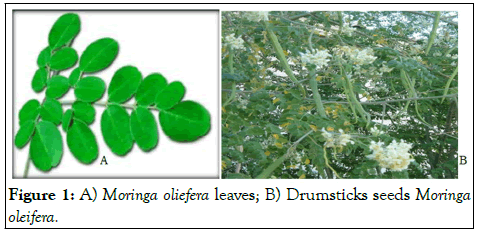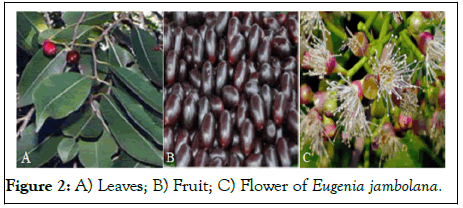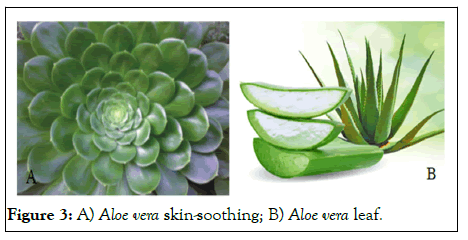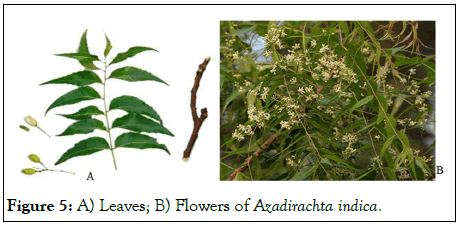Current Synthetic and Systems Biology
Open Access
ISSN: 2332-0737
ISSN: 2332-0737
Research Article - (2024)Volume 12, Issue 2
Medicinal plants are used against different pathogens in raw form and as extracts. Crude extracts of medicinal plant has used for treatment of both infectious and non-infectious diseases. The spread of multidrug resistant bacteria in hospital and community settings remains a widely unresolved problem and a heavy burden to health services. The antibiotic-resistance bacteria and their influence on people have triggered the expert for the identification of new antimicrobial drugs from plants in relation to the secondary metabolites present within the plant parts. A great deal of medicinal plants understanding must, therefore, be obtained by inference, using clues from what can be seen and what can be measured in the community in ancient and recent time.
Treatment; Antibiotic-resistance; Metabolites; Pathogens; Health services
Plants are used medicinally in different countries and are a source of many potent and powerful drugs. A number of workers have approved that medicinal plants represent a rich source of antimicrobial agents [1]. A wide range of medicinal plant parts are being used for extract as raw drug and they possess varied medicinal properties. The bioactive secondary metabolites from different classes of phytochemicals could kill or inhibit the microorganism growth viadifferent mechanisms. For instance, Epicatechin gallate inhibits MRSA by insertion into the bacteria cytoplasmic membrane and disruption of penicillin-binding protein 2α-mediated β-lactam resistance [2]. These medicinal plants are used against different pathogens in raw form and as extracts. It is well known that even the most synthetic drugs have their origin from plant products. The extract of Syzigium cumini has a significant potential antimicrobial activity against the multidrug resistant bacteria and also serves an important data regarding the valuable research in treating infectious diseases [3]. It also reveals that the petroleum ether may be an effective solvent in future for antimicrobial studies of Syzigium cumini. The ethanolic extract of Caesalpinia sappan Linn was therefore designated as the most effective herbal plant to be used for developing herbal products. Caesalpinia sappan Linn hold most significant potential for antibacterial activity against multidrug resistant bacterial strain.
This study identified Caesalpinia sappan Linn as a potential herbal plant for development of an effective treatment of bacterial infection in the future. Antimicrobial activities of four traditional medicinal plants from Nepal were assessed by cold percolation method. Methanolic extracts of Oxalis corniculata, Artemisia vulgaris, Cinnamomum tamala and Ageratina adenophora were subjected to a test of their antimicrobial properties by agar well diffusion method [4]. The potential antibacterial effects of Oxalis corniculata extracts against bacterial strains tested, whereas Cinnamomum tamala, Ageratina adenophora and Acetosella vulgaris were effective only against S. aureus.
Drug resistant Staphylococcus aureus and Pseudomonas aeruginosa
Emergence of multi-drug resistance in human and animal pathogenic bacteria as well as undesirable side effects of certain antibiotics has triggered immense interest in the search for new antimicrobial drugs of plant origin [5]. The prevalence of resistant bacteria is significant and deserves more consideration. Antibiotic resistance is a problem that continues to challenge the healthcare sector in a large part of the world in both developing and developed countries.
The spread of Multidrug Resistant (MDR) bacteria in hospital and community settings remains a widely unresolved problem and a heavy burden to health services. S. aureus is a grampositive bacterium colonized on the skin and present in the nose of 25% to 30% of healthy people. It is one of the leading human pathogens that is responsible for a number of communities acquired, nosocomial and biofilm related infections worldwide [6]. The ranking of antibacterial activity of E. gerardiana against the three bacterial strains was E. coli>S. aureus>P. aeruginosa. Chloroform, butanol and ethyl acetate extract of A. indica showed significantly higher inhibitory activity against P. aeruginosa and S. aureus.
Medicinal plants
Moringa oleifera: Moringa oleifera is one of the species of family Moringaceae, native to Africa, South Asia, South America and India. Moringa oleifera has been naturalized in many tropic and subtropics regions worldwide, the plant is referred to number of names such as horseradish tree, drumstick tree, ben oil tree, miracle tree and “mothers best friend”. The plant's various morphological parts have been implicated to have antimicrobial potential, such as the seed cotyledon, leaves, root bark and stem bark. The ethyl acetate and acetone extracts of Moringa oliefera showed maximum antibacterial activity against Escherichia coli, Staphylococcus aureus, Salmonella gallinarum and Pseudomonas aeruginosa. The sensitivity of the above bacteria to methanol and chloroform extracts was in between the ethyl acetate/acetone and aqueous extracts. The aqueous extract had minimum antibacterial activity against all the above bacteria among the extracts (Figure 1) [7,8].

Figure 1: A) Moringa oliefera leaves; B) Drumsticks seeds Moringa oleifera.
The water extract of Moringa oleifera is active against the tested gram positive bacteria especially Staphylococcus aureus, the results confirm the use of the plant Moringa oleifera showed promising antibacterial activities and it can play a role in the therapy of infection diseases. The antibacterial efficacy of M. oleifera is age dependent. The aged plants showed potent antibacterial activity than the young ones. Antibacterial properties of ethyl acetate bark of M. oleifera have maximum antibacterial activity against S. aureus. It is used in water purification and helps in reducing the incidence of water borne diseases. Moringa oleifera is a highly valued plant, distributed in many countries of the tropics and subtropics [9]. Seeds and leaves show activity against different bactericidal and/or bacteriostatic action against Staphylococcus aureus, Vibrio cholerae, V. parahaemolyticus, Enterococcus faecalis, Salmonella enteritidis, Aeromonas caviae, Pasteurellamultocida, Bacillus subtilis, E. coli, Pseudomonas aeruginosa, Enterobacter cloacae, Proteus vulgaris and Micrococcus kristinae.
Eugenia jambolana
Eugenia jambolana (family Myrtaceae) has venerable curative properties for treatment of various diseases. It is one of the broadly utilized therapeutic plants all through the world for the treatment of the numerous infections mainly diabetes mellitus. The characteristic parts of E. jambolana plant included leaves, seed, stem and fruit have excessive remedial worth. The anatomy of Eugenia jambolana shows the presence of compactly arranged cork cells, tannin cells, sclereids, fibers and calcium oxalate crystals. The phytochemical analysis of Eugenia jambolana revealed the presence of Terpenoids, saponins, phenols, flavonoids, tannins and coumarins (Figure 2) [10].

Figure 2: A) Leaves; B) Fruit; C) Flower of Eugenia jambolana.
Aloe vera
Aloe barbadensis miller (Aloe vera) belongs to the lialiaceal family of which there are about 360 species. It is a cactus-like plant that grows readily in hot, dry climates and currently because of demand; it is cultivated in large quantities. The antibacterial potential of Aloe vera fresh gel was evaluated both in-vivo and in-vitro condition. In-vitro experiment was stabilized that Aloe vera fresh gel has anti-S. aureus activity with appearance of inhibitory zone. The toothpastes that include Aloe vera and wild strawberry extracts exhibited antimicrobial activity against two important cariogenic bacteria (S. mutans and S. aureus) [11] (Figure 3). The antimicrobial activity of A. vera containing toothpastes was significantly higher than that of wild strawberry containing toothpastes. The ethanol and aqueous extracts of Aloe vera gel had appreciable antimicrobial activity against Escherichia coli, Staphylococcus aureus and Candida albicans, while methanol extract had lowest activity on Escherichia coli but did not inhibit Staphylococcus aureus and Candida albicans. Aloe vera gel is a bactericidal agent causing against Pseudomonas aeruginosa and acemannan and prevent human lung epithelial cells from adhering in a monolayer culture. Aloe vera gel has antibacterial activity with almost equal response against E. coli and Staphylococcs aureus with varied activity against Pseudomonas aeruginosa.

Figure 3: A) Aloe vera skin-soothing; B) Aloe vera leaf.
Lepidium sativum
Lepidium sativum is fast growing edible herb, known as pepper cress or Elrashad or Garden cress belongs to the family Brassicaceae (cruciferae) and it is an erect, annual herb grows up to 50 cm height. The genus Lepidium comprises several species growing in moist temperate warm climate. The seeds of L. sativum are aperients, diuretic, tonic, demulcent, carminative, galactagogue and emmenagogue. They have been boiled with milk and are used to procure an abortion. These have been applied as a poultice to pains and hurts, used as an aperients and are also used in the treatment of bacterial and fungal infections (Figure 4) [12].

Figure 4: A) Leaves; B) Seeds of Lepidium sativum.
Azadirachta indica
The tree, Azadirachta indica of the family Meliaceae; popularly known as Neem tree is an evergreen tree. Neem tree may vary in chemical make-up because of genetic and environmental factors (Figure 5). Earlier studies on Neem have shown that it contains active substances with multiple medicinal properties and methanol extract of Neem was reported to have in vitro antimicrobial activities against S. aureus, E. coli, Ps. aeruginosa and C. albicans. It has shown to possess significant effects on both gram-positive and gram-negative organisms and other bacteria that cause a wide array of human and animal diseases including E. coli, Streptococcus and Salmonella (Tables 1 and 2) [13].

Figure 5: A) Leaves; B) Flowers of Azadirachta indica.
| Plants | Biological activity |
|---|---|
| Moringa oliefera | Promotes digestion, skin diseases and diarrhea, as stimulant in paralytic afflictions, epilepsy and hysteria |
| Eugenia jambolana | Giddiness, infantile diarrhea, dysentery, hemorrhage, leucorrhoea, non-insulin-dependent type II diabetes, excessive thirst, dyspepsia, cough, asthma and menorrhagia, spongy gums, tumors, stomatitis, relaxed throat etc. |
| Aloe vera | Treatment of cancer and AIDS, fight against cell aging, antifungal, antiviral, analgesic, antibacterial, anti-inflammatory, anticancer, wound healing, cleansing, antioxidant, neutralizes free radicals |
| Anti-bacterial, anti-septic, anti-viral, anti-inflammatory, anti-tumor, anti-oxidant, moisturizing, anti-aging, promotes digestion, diabetes, immune system and peptic ulcers | |
| Lepidium sativum | Gonorrhea, pneumonia, eye infections and mycotic infections |
| Azadirachta indica | Antiviral activity against vaccinia, chikungunya, measles and coxsackie B viruses |
| Skin disorders, rashes and boils, stomach ulcers, rheumatism, respiratory tract infections, sore gums and throat, eye and ear infections, leprosy and diabetes | |
| Tiredness, cough, fever, loss of appetite, worm Infestation, antifungal properties like athlete’s foot, ringworm and candida; antiviral activities like Dengue virus, a hemorrhagic fever related to Ebola; shown impressive action against a wide variety of human cancer cell that include colon, stomach, lung, liver, skin, oral, prostate and breast; antiseptic ingredients necessary for dental hygiene and prevents tooth decay, periodontal diseases, infections, tooth decay, bleeding gums and sore gums |
Table 1: Biological activities of medicinal plants in management of various disorders.
| Extract | S. aureus | P. aeruginosa | ||||
|---|---|---|---|---|---|---|
| Disc diffusion method | MIC (mg/mL) | Disc diffusion method | MIC (mg/mL) | |||
| Conc. (mg/mL) | ZI (mm) | Conc. (mg/mL) | ZI (mm) | |||
| Methanol (M. oleifera leaf) | 200 | 7.5 | 90 | 200 | 7.89 | 90 |
| Aqueous (M. oleifera leaf) | 200 | 7.61 | 90 | 200 | 7.72 | 90 |
| Methanol (Aloe vera leaf) | 100 | 7.28 | 90 | 100 | 6.89 | 90 |
| Aqueous (Aloe vera leaf) | 100 | 6.5 | 160 | 100 | 6.78 | 380 |
| Hexane (L. sativum seeds) | 50 | 11 | 50 | 50 | 13 | 12.5 |
| Ethanol (A. indica bark) | 5 | 5 | 5 | 5 | 8 | 5 |
| Methanol (E. jambolana) | 4 | 23 | 0.75 | 4 | 18 | 1.5 |
Table 2: Antibacterial activity of medicinal plants.
Using of different medicinal plants by the community for treatment of different abnormality occur in the communities serve as an evidence to assign plants as the sole point of drug. Hence, peoples can use medicinal plants in two ways: One way is to treat non infectious diseases and the second way is to treat infectious diseases. But these two ways of use of plants is concerned with events that took place in the remote past when no one was practiced to witness them for production of synthetic drug. The antibiotic-resistance bacteria and their influence on people have triggered the expert for the identification of new antimicrobial drugs from plants in relation to the secondary metabolites present within the plant parts. A great deal of medicinal plants understanding must, therefore, be obtained by inference, using clues from what can be seen and what can be measured in the community in ancient and recent time to eliminate microorganisms with subsequent occurrence of diseases and drug actions on diseases causing microorganisms. There are many such clues not only in the community, but also studied as antibacterial activities and treatment of different diseases as mentioned in the table.
[Crossref] [Google Scholar] [PubMed]
[Crossref] [Google Scholar] [PubMed]
[Crossref] [Google Scholar] [Pubmed]
[Crossref] [Google Scholar] [PubMed]
[Crossref] [Google Scholar] [PubMed]
[Google Scholar] [PubMed]
Citation: Ibrahim N (2024) Medicinal Plants and Antibacterial Activities against Drug Resistant Staphylococcus aurous and Pseudomonas aeruginosa: A Review. Curr Synth Syst Bio. 11:062.
Received: 05-Mar-2020, Manuscript No. CSSB-24-3553; Editor assigned: 10-Mar-2020, Pre QC No. CSSB-24-3553 (PQ); Reviewed: 24-Mar-2020, QC No. CSSB-24-3553; Revised: 15-May-2024, Manuscript No. CSSB-24-3553 (R); Published: 12-Jun-2024 , DOI: 10.35248/2332-0737.24.12.062
Copyright: © 2024 Ibrahim N. This is an open-access article distributed under the terms of the Creative Commons Attribution License, which permits unrestricted use, distribution, and reproduction in any medium, provided the original author and source are credited.